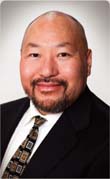
Mark Hagland
The word “innovate” derives directly from the Latin verb innovare, “to renew, make new, alter.” According to Webster's New World Dictionary of the American Language, “to innovate” means “to introduce new methods, devices, etc.” There are countless examples of innovation in science, technology, the arts, and so on. One of the most famous examples of innovation in the building world is the creation of the skyscraper, which first emerged in Chicago, following the Great Chicago Fire of 1871, which had torched the central business district and virtually all of the northern part of the city.
Real estate having always been very expensive in Chicago, its civic leaders faced huge challenges as they began to rebuild the city in the years following 1871. They needed to quickly rebuild a dense, rapidly growing urban core. The key shift that took place, technologically speaking, was a shift in building techniques from creating buildings founded on load-bearing masonry, to those conceived around a steel skeleton. One has only to take an architectural tour of downtown Chicago, and to compare the tallest pre-steel-skeleton buildings, such as the 17-story Monadnock Building (the tallest masonry-based building ever constructed)with its newer, steel-based peers, to understand what kind of revolution was taking place in Chicago (and soon in New York and elsewhere) in the 1870s and 1880s.
STAKEHOLDER GROUPS WANT A SYSTEM WHOSE CARE QUALITY, PATIENT SAFETY, EFFICIENCY, COST-EFFECTIVENESS, ACCOUNTABILITY, AND TRANSPARENCY ARE DRAMATICALLY IMPROVED FROM THEIR PRESENT STATES.
In fact, it was civil engineers, who had built many of the steel bridges during the Civil War period, who first came up with the idea of applying bridge technology to buildings. Of course, this was an entirely new concept at the time, but as it made sense and could be proven demonstrably to work, it quickly caught on. Within 20 years, the steel-skeleton skyscraper was established as the foundational structure for modern commercial and public buildings going forward.
Is it time to apply some of the same kind of thinking to healthcare delivery? You bet it is. The passage of federal healthcare reform legislation last year and of the federal stimulus package, including the HITECH Act, in 2009, only cemented previous developments. It confirmed, in explicit terms, what the public and private purchasers and payers of healthcare, as well as to some extent, consumers, have long been demanding from our healthcare system. All those stakeholder groups want a system whose care quality, patient safety, efficiency, cost-effectiveness, accountability, and transparency, are dramatically improved from their present states. And they want the improvements now. But how to do so without leveraging information technology?
Fortunately, the leaders of more and more patient care organizations are forging ahead to create the healthcare of the future (that everyone wants now); and they are aggressively, and often ingeniously, leveraging IT to create improvements in all those areas. The fact of so much innovation hit home for us when we received several dozen terrific submissions to our Healthcare Informatics Innovator Awards program last autumn. We wish we could highlight every one of the examples submitted to us, but alas, we had to make choices.
Fortunately, this year's three winning organizations-Children's Hospital & Medical Center in Omaha, Southeast Texas Medical Associates, and Maine's statewide HIE, HealthInfoNet-provide truly shining examples of the leveraging of IT for fantastic results across a spectrum of areas of activity. We are privileged and pleased to present our Innovator winners' stories-and to note as well that, for the first time, a medical group and an HIE have been chosen as finalist-winners-to you, our readers. Developing and presenting the Innovator Awards program each year speaks to our core mission: to support and encourage healthcare transformation through example and articulation. And we can't wait to introduce a whole new crop of Innovators to you again in 2012.

Mark Hagland, Editor-in-Chief
Healthcare Informatics 2011 February;28(2):8
|